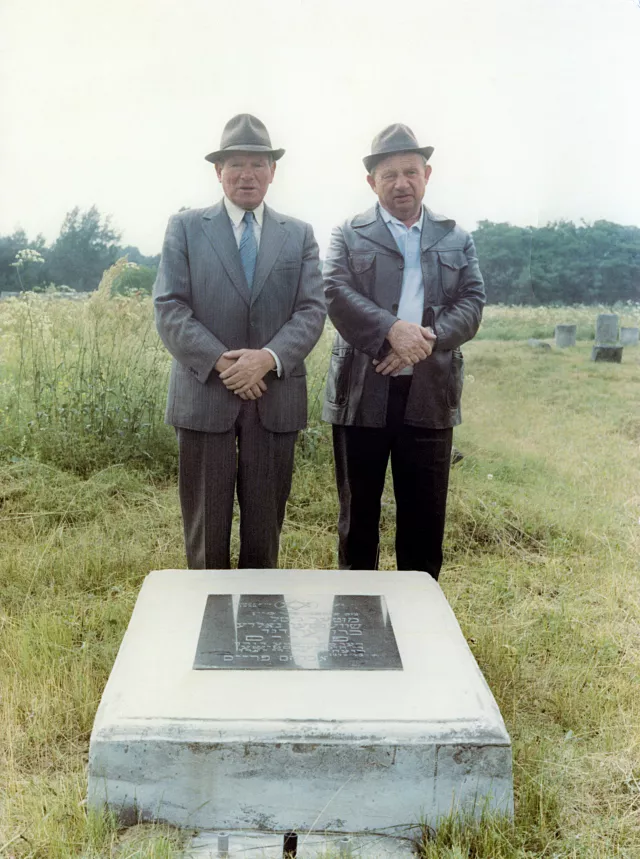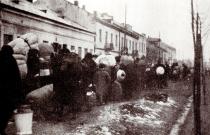Henryk Prajs and his friend Feliks Karpman at the Jewish cemetery in Gora Kalwaria
This is a photo of me and my friend Feliks Karpman at the Jewish cementery in Gora Kalwaria. It shows a symbolic grave of my family. I took a handful of earth from a few places: Treblinka, Majdanek, Auschwitz and the Warsaw ghetto and buried it in Gora Kalwaria. It was maybe 20 years ago.
My calculations show I've lost 36 members of my immediate family, meaning the aunts and their children. On 25th February 1941 the Germans deported the Jews from Gora Kalwaria to the ghetto in Warsaw. I don't know what happened to my family. I lost contact with them on that day. They were gone without a trace.
I'm proud I was the first one to commemorate the fallen. I took out the wicket from the synagogue fence and put it in the Jewish cemetery. It still has the bullet marks made when the Germans shot Pinio Rawski. I hired a guy I knew named Cieplak to put a fence around the cemetery. There were four or five mazevot left. The Germans and the Poles took the rest.
It was a total mess. I started to put things in order at the cemetery. People reported some tombstones to me, so I collected them, transported to the cemetery and put them upright. These are pre-war mazevot, but they're not standing on their previous spots. Many of these people I knew personally, could be 80 per cent: Szternfeld, Rozenblum, Skrzypek, Mesing, I just didn't recall their burial places exactly, I hadn't attended every funeral.
The tzaddiks' tomb is real. Two of them are buried there, the founder of the dynasty, Chidusz ha-Rem, or Arie Lejb, and his grandson Sfas Emes. The ohel was demolished during the war, but they didn't get inside, so it's the actual burial place. The new ohel was put up a few years ago by the Hasidim from Israel or America, from the Gora Kalwaria communities. They visit the tzaddik's tomb very often.






















